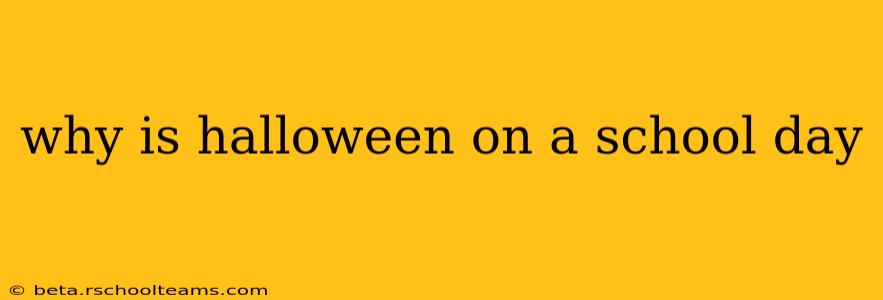Why is Halloween on a School Day? The Curious Case of a Holiday's Scheduling
Halloween, a night of spooky fun and sugary treats, often falls on a school day, leaving many parents and students wondering why. The simple answer is that Halloween's date, October 31st, is a fixed date on the Gregorian calendar, and the school calendar isn't adjusted around it. However, this simple answer hides a more complex reality involving historical tradition, logistical challenges, and the sometimes-conflicting needs of different communities. Let's delve deeper into the reasons behind this seemingly inconvenient coincidence.
Why isn't Halloween moved to a weekend?
This is a frequently asked question, and the answer is multifaceted. Firstly, moving a holiday as deeply rooted in tradition as Halloween would be a monumental task. It's not simply a matter of flipping a switch; such a change would require widespread consensus and significant adjustments across various sectors, including businesses, event planners, and even religious calendars. The cultural significance of Halloween on October 31st is deeply ingrained, making a change unlikely.
How is the school calendar determined?
School calendars are meticulously planned, considering various factors. These include:
- State and local regulations: Many states have minimum school day requirements, limiting flexibility.
- Teacher contracts and professional development: Scheduling needs to account for teacher training and other essential professional development activities.
- Holidays and religious observances: The calendar attempts to accommodate diverse religious and cultural events.
- Seasonal factors: Weather patterns, particularly in areas with harsh winters, often influence the timing of school breaks.
Fitting Halloween into this complex schedule is rarely a priority. The school year is determined far in advance, with Halloween's fixed date simply falling where it may.
What are the implications of Halloween falling on a school day?
When Halloween falls on a weekday, it creates several practical challenges:
- Trick-or-treating logistics: Parents must arrange alternative trick-or-treating times, often leading to rushed events after school or condensed celebrations.
- School safety: Schools must manage increased student traffic and excitement around the holiday, potentially needing extra supervision.
- Classroom disruptions: The anticipation of Halloween can sometimes lead to minor disruptions in classroom learning.
Are there alternative solutions?
While a complete calendar overhaul isn't feasible, some schools and communities employ strategies to mitigate the impact of Halloween on a school day:
- Afternoon or evening trick-or-treating: Many communities schedule their trick-or-treating hours in the late afternoon or evening to accommodate school schedules.
- School-based Halloween celebrations: Schools might host their own Halloween parties or events during the school day to manage excitement and ensure student safety.
- Early dismissal: Some schools may opt for an early dismissal on Halloween to facilitate trick-or-treating.
In conclusion, while it may seem inconvenient for Halloween to fall on a school day, the fixed nature of its date and the complexities of the school calendar make a shift highly improbable. Instead, communities and schools find creative solutions to navigate the scheduling challenge and maintain the fun and spirit of Halloween.
